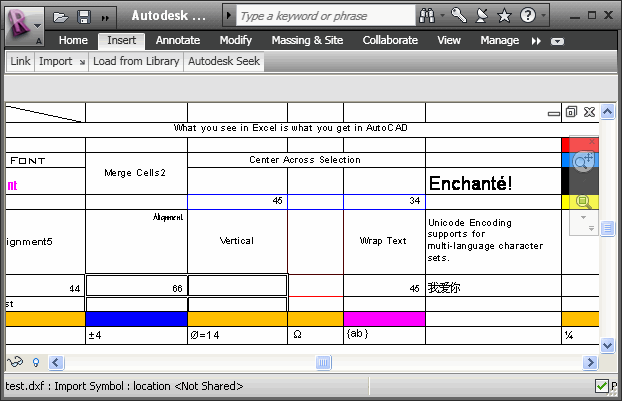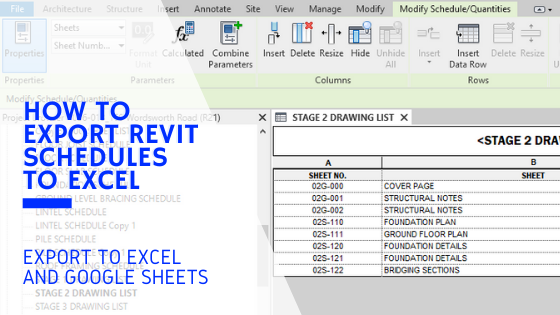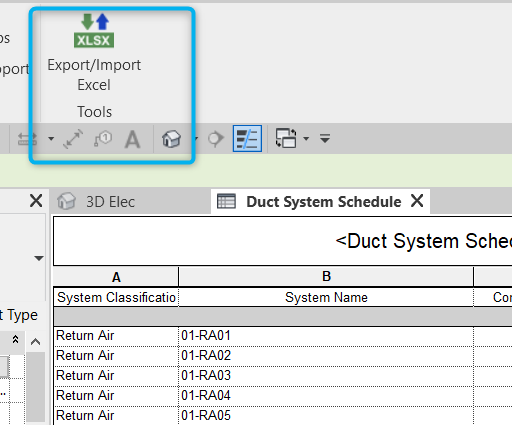Revit Tool to Empower Your Structure Info Modeling
Wiki Article
Excel Empowerment: Supercharge Your Revit Projects With Seamless Data Import
Are you aiming to supercharge your Revit tasks? With smooth data import, Excel empowerment can be the key to unlocking your project's full possibility. Imagine streamlining the import procedure and maximizing performance via smooth data assimilation. In this write-up, we will certainly share tips and techniques for utilizing Master your Revit tasks. Discover exactly how harnessing the Excel-Revit connection can result in success in your projects. Get prepared to take your Revit tasks to the next level with Excel empowerment.The Power of Master Revit Projects
You can supercharge your Revit projects by using the power of Excel for seamless information import. Excel is a flexible device that can considerably enhance your workflow and efficiency in Revit (import excel into revit). With Excel, you can conveniently import and take care of big quantities of data, saving you effort and timeOne of the essential benefits of making use of Excel in Revit is its capability to take care of complex estimations and formulas. You can use Excel to carry out estimations on your data, such as producing quantities, determining prices, or analyzing efficiency. When working with huge tasks that call for comprehensive calculations., this can be particularly helpful.

Additionally, Excel gives a user-friendly and familiar interface for collaborating with data. You can organize and adjust your information in a spread sheet layout, making it very easy to check out and modify. When collaborating with others or when you require to make quick adjustments to your project information., this can be especially handy.
Additionally, Excel enables you to easily import and export information in between Revit and various other software application applications. You can import data from exterior resources right into Revit, such as material specs or tools timetables, and export information from Revit to Excel for additional analysis or coverage.
Streamlining Information Import With Master Revit
Streamlining information import in Revit comes to be much easier when utilizing Excel as a tool. With Excel, you have the power to effortlessly import and take care of big amounts of information in your Revit jobs. By making use of the acquainted interface and capability of Excel, you can save time and increase performance in your process.One of the vital advantages of using Excel for data import in Revit is the ability to quickly organize and control data prior to importing it right into your task. With Excel's effective attributes, such as sorting, filtering, and solutions, you can rapidly tidy up and format your data to fulfill the requirements of your Revit project.
In addition, Excel allows you to import information from various sources, such as data sources, spread sheets, or perhaps web-based applications. This flexibility provides you the liberty to gather information from various systems and settle it into one main area for very easy access and management.
In enhancement, Excel offers the option to create custom-made layouts for information import in Revit. By developing themes customized to your job's details needs, you can ensure consistency and accuracy in your data import procedure.
General, utilizing Excel as a tool for data import in Revit simplifies the procedure and boosts your productivity. Why not take advantage of this effective tool and supercharge your Revit jobs with seamless data import using Excel?
Making Best Use Of Efficiency With Seamless Information Integration
Make best use of effectiveness by flawlessly incorporating and managing information in your process. Gone are the days of by hand inputting data into your system, losing precious time and sources. With seamless data assimilation, you can streamline your processes and supercharge your performance.
When you have a smooth combination system in area,Managing information comes to be a wind. You can quickly organize and classify your data, making it less complicated to fetch and examine. Bid farewell to the days of browsing through endless spreadsheets for that piece of details you need.

Excel Advice for Revit Projects
Additionally, you can utilize Excel to create custom-made design templates for data import and export. This way, you can make sure uniformity and accuracy when moving information between Revit and Excel. In general, understanding these Excel tricks and suggestions will greatly boost your capacity to handle and manipulate information in your Revit projects.Harnessing the Excel-Revit Connection for Success
To make the most of your Excel-Revit connection, make the most of the ability to effortlessly integrate and transfer project information. By harnessing this powerful connection, you can supercharge your Revit jobs and streamline your operations. With just a few simple actions, you can import information from Excel directly into Revit, conserving you time and making sure precision.One of the crucial advantages of the Excel-Revit connection is the capability to transfer information effortlessly. Whether you are importing timetables, area information, or even geometry info, Excel gives a straightforward user interface that enables you to organize and control your information prior to importing it into Revit. This implies you can easily upgrade and change your job information in Excel, and with a few clicks, move those adjustments directly right into your Revit model.
Along with moving data, the Excel-Revit link likewise enables for synchronization. This suggests that any changes made in Excel can be immediately updated in Revit, making sure that your project details is always approximately date. This synchronization function is especially valuable when dealing with complex and big tasks, as it removes the need for hand-operated data entry and minimizes the threat of mistakes.
Verdict
By improving data import and optimizing efficiency through smooth information integration, you can supercharge your jobs and accomplish success. Do not wait any longer, begin using the power of Excel in your Revit jobs today and unlock a globe of possibilities.You can supercharge your Revit projects by using the power of Excel for seamless information import. With Excel, you have the power to effortlessly import and handle large quantities of data in your Revit tasks (revit tool). Generally, understanding these Excel tips and methods will significantly improve your capacity to take care of and adjust information in your Revit jobs
Whether you are importing timetables, area data, or also geometry details, Excel offers a straightforward interface that permits you to organize and control your information prior to importing it right into Revit. By enhancing data import and making the most of efficiency via seamless information assimilation, you can supercharge your jobs and accomplish success.
Report this wiki page